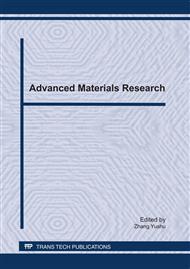p.103
p.107
p.111
p.116
p.121
p.126
p.131
p.136
p.143
Resistance Measurements in Conductive Fabrics
Abstract:
Conductive fabrics look and feel like traditional fabrics, but there are conductive elements in the structure. Conductive fabrics are used for example in heating and ESD protection applications. The purpose of this study was to investigate how much the resistance of a conductive fabric changes when different factors, for example stretching or pressure, affect them. Three conductive fabrics were tested in this study. From each fabric two samples were cut in different directions and five different measurements were made for each sample: without pressure (M1), with pressure (M2), stretching (M3), with pressure and stretching (M4) and temperature variation The stretching and pressure reduce the resistance of the fabric. The lowest resistance results were achieved with a fabric, which has been made of conductive yarns only. In addition resistance value varies in different temperatures.
Info:
Periodical:
Pages:
121-125
Citation:
Online since:
February 2011
Authors:
Keywords:
Price:
Сopyright:
© 2011 Trans Tech Publications Ltd. All Rights Reserved
Share:
Citation:


